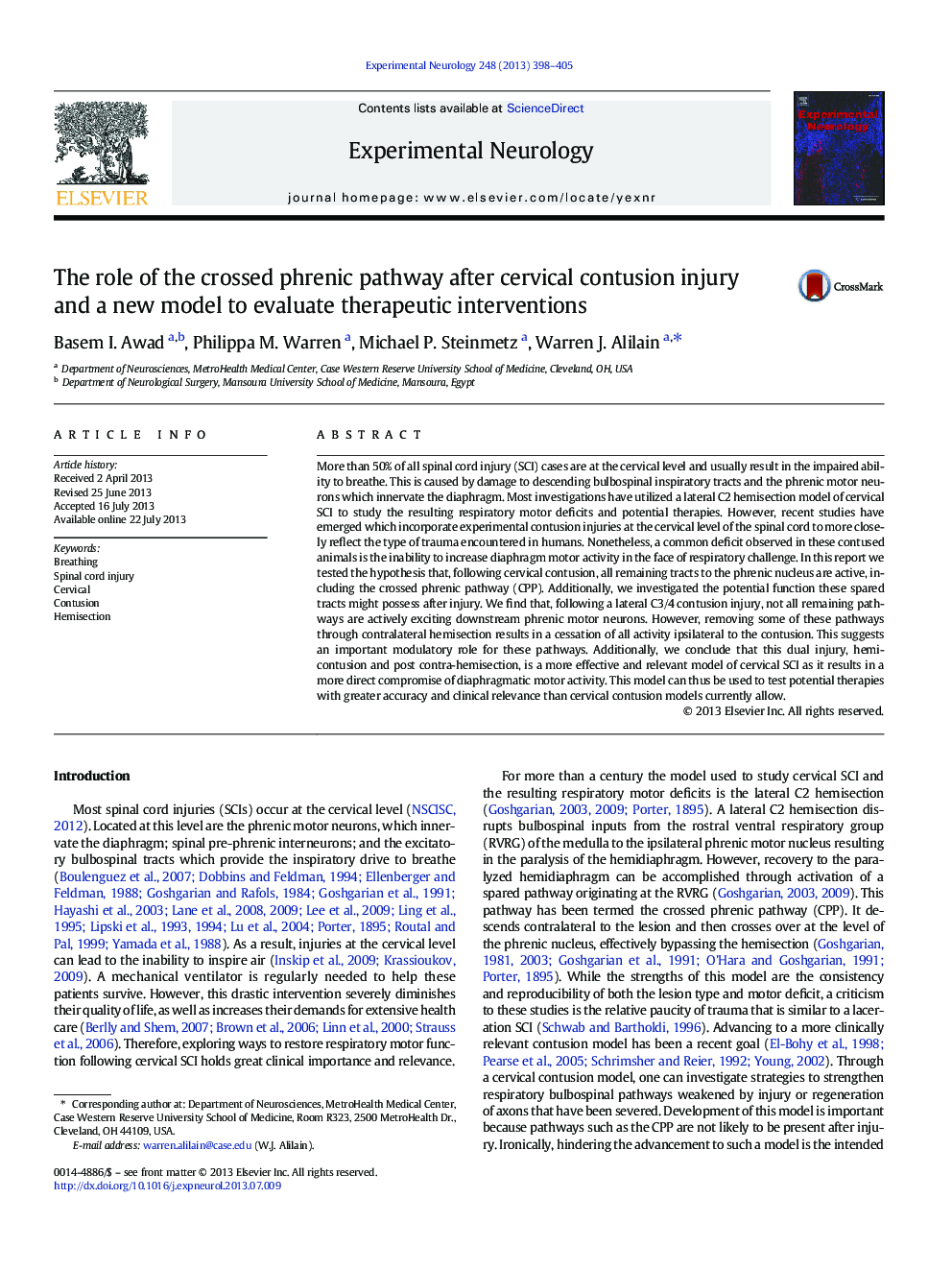| Article ID | Journal | Published Year | Pages | File Type |
|---|---|---|---|---|
| 6018115 | Experimental Neurology | 2013 | 8 Pages |
Abstract
More than 50% of all spinal cord injury (SCI) cases are at the cervical level and usually result in the impaired ability to breathe. This is caused by damage to descending bulbospinal inspiratory tracts and the phrenic motor neurons which innervate the diaphragm. Most investigations have utilized a lateral C2 hemisection model of cervical SCI to study the resulting respiratory motor deficits and potential therapies. However, recent studies have emerged which incorporate experimental contusion injuries at the cervical level of the spinal cord to more closely reflect the type of trauma encountered in humans. Nonetheless, a common deficit observed in these contused animals is the inability to increase diaphragm motor activity in the face of respiratory challenge. In this report we tested the hypothesis that, following cervical contusion, all remaining tracts to the phrenic nucleus are active, including the crossed phrenic pathway (CPP). Additionally, we investigated the potential function these spared tracts might possess after injury. We find that, following a lateral C3/4 contusion injury, not all remaining pathways are actively exciting downstream phrenic motor neurons. However, removing some of these pathways through contralateral hemisection results in a cessation of all activity ipsilateral to the contusion. This suggests an important modulatory role for these pathways. Additionally, we conclude that this dual injury, hemi-contusion and post contra-hemisection, is a more effective and relevant model of cervical SCI as it results in a more direct compromise of diaphragmatic motor activity. This model can thus be used to test potential therapies with greater accuracy and clinical relevance than cervical contusion models currently allow.
Related Topics
Life Sciences
Neuroscience
Neurology
Authors
Basem I. Awad, Philippa M. Warren, Michael P. Steinmetz, Warren J. Alilain,
